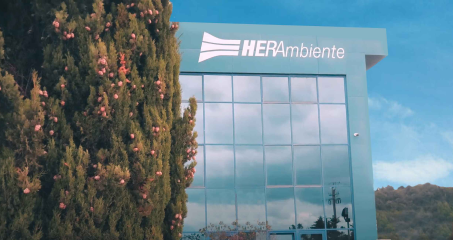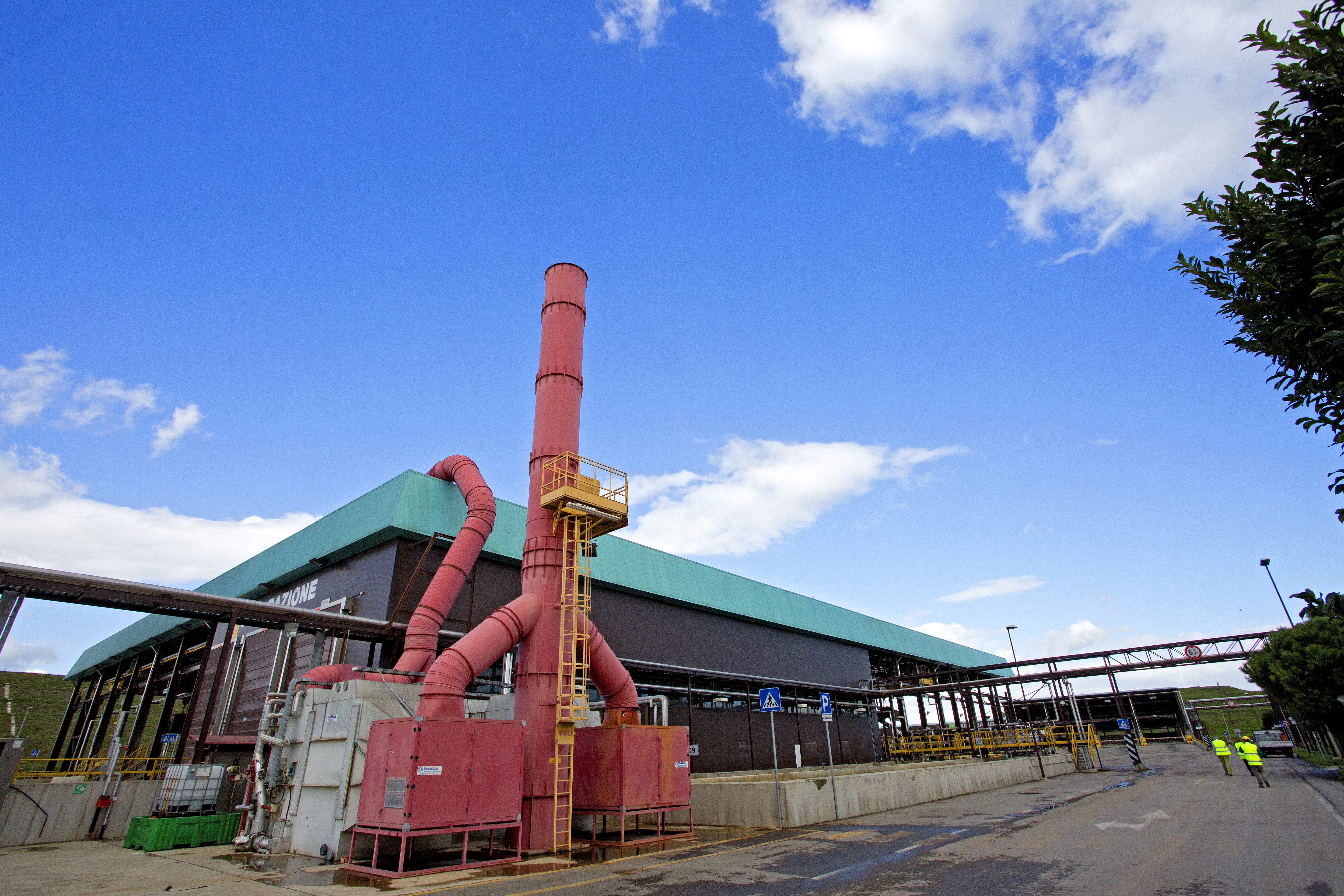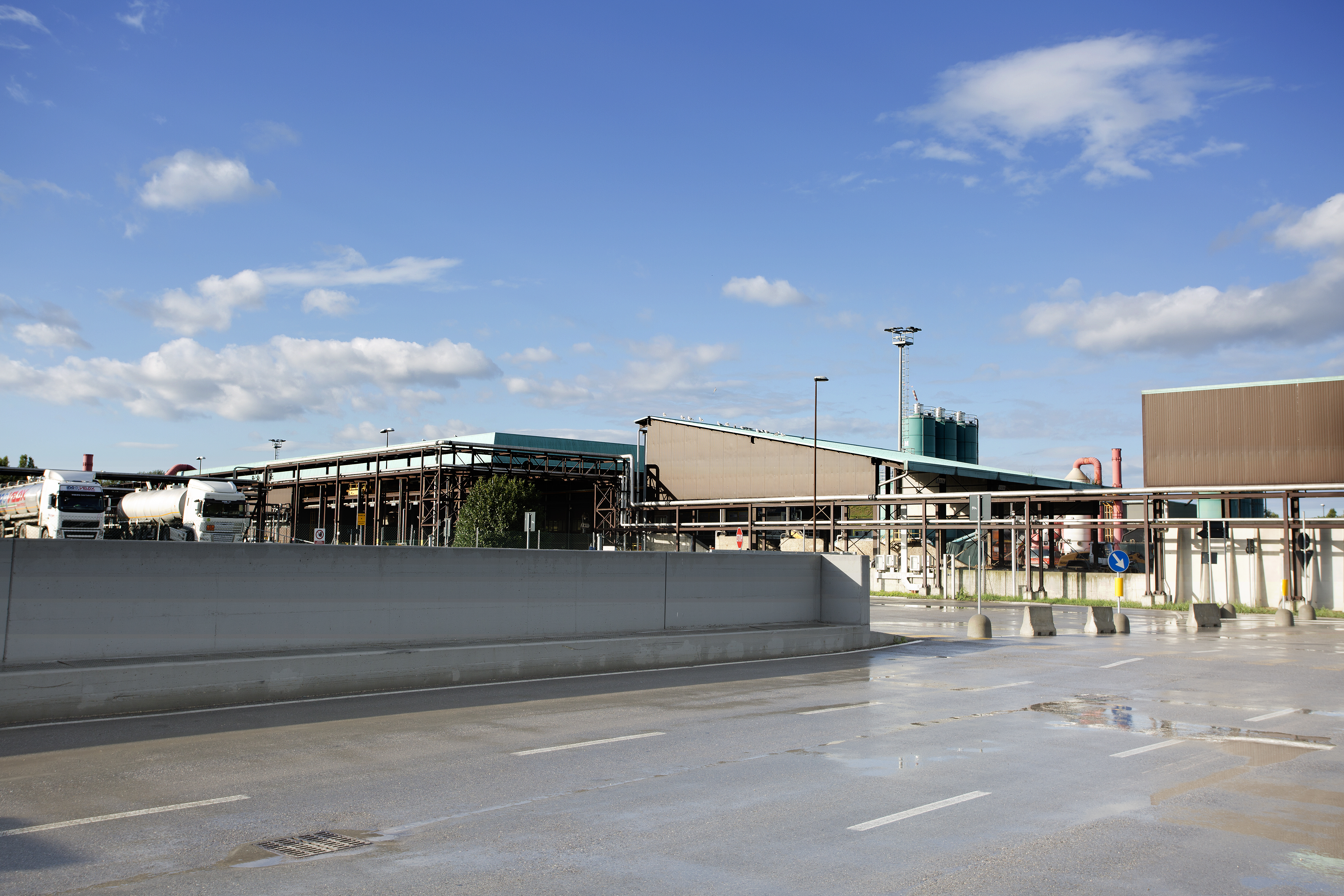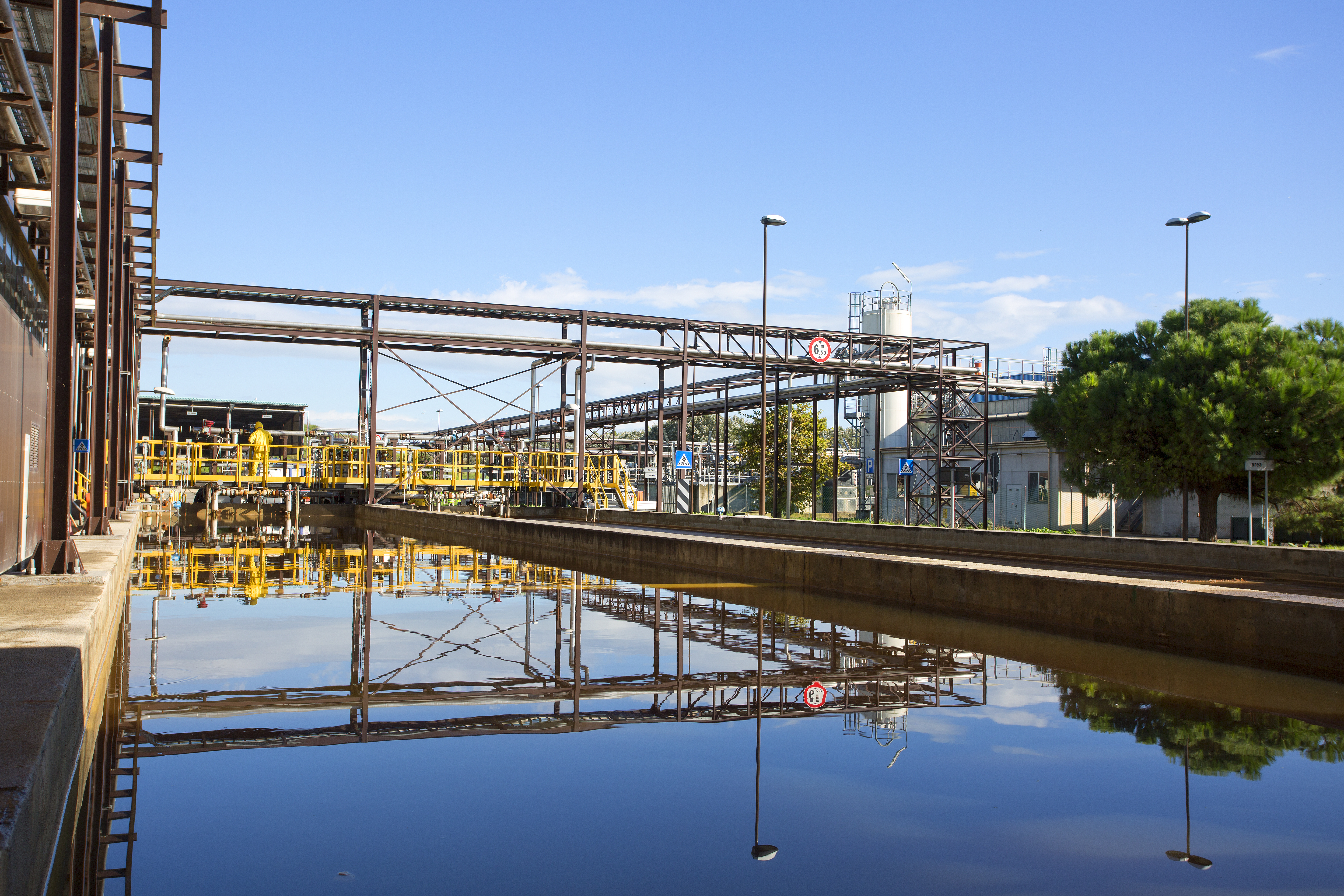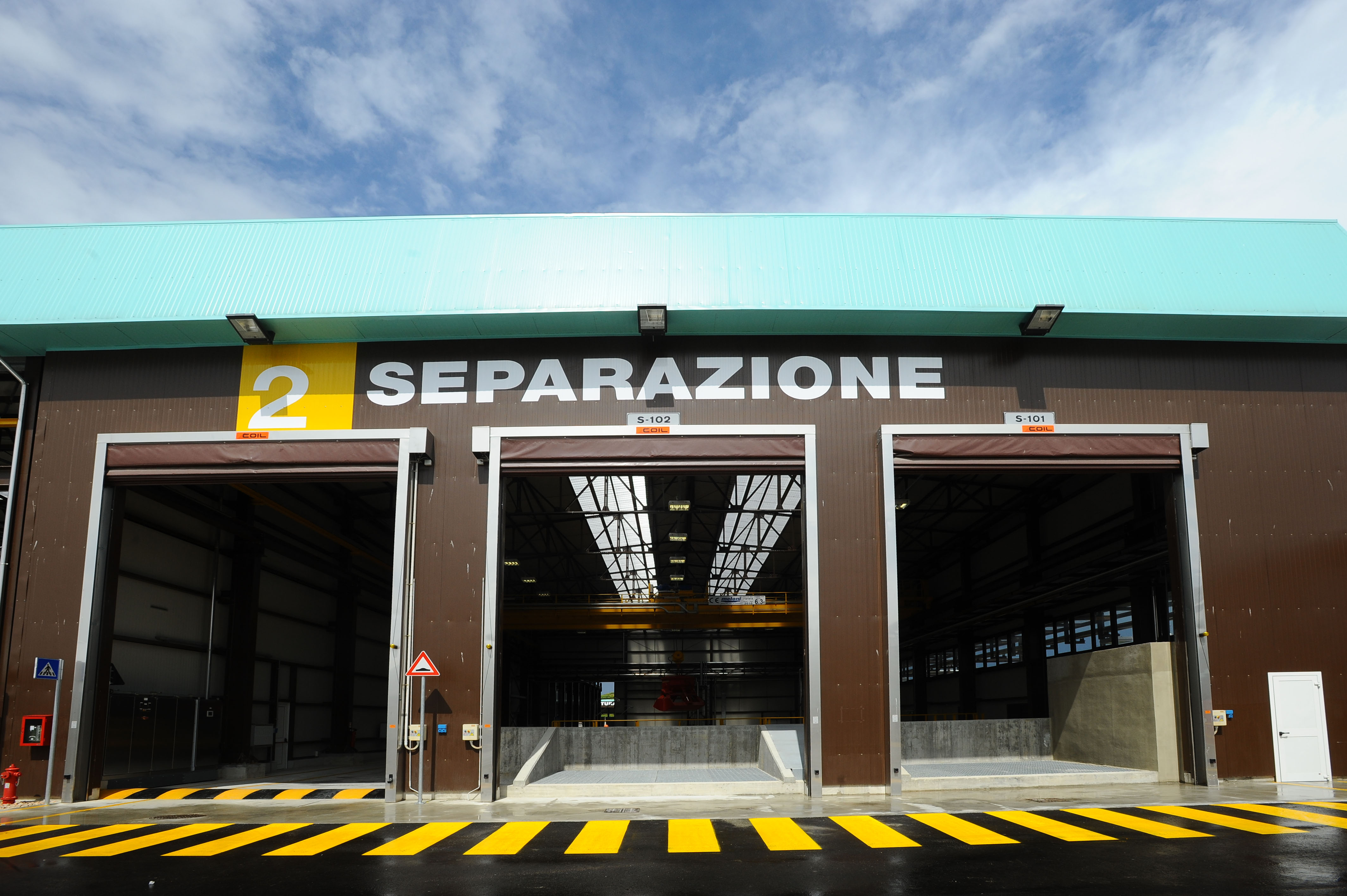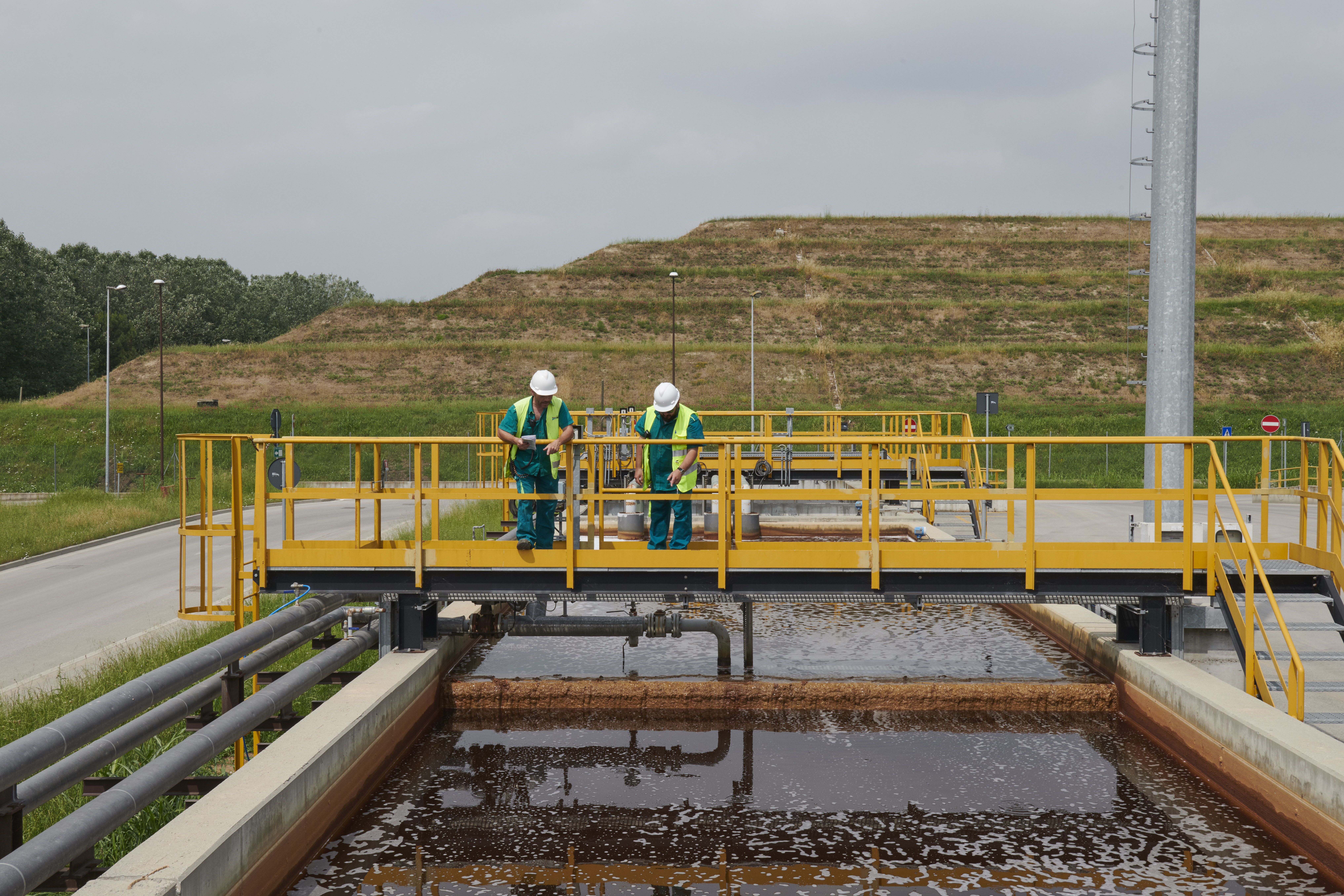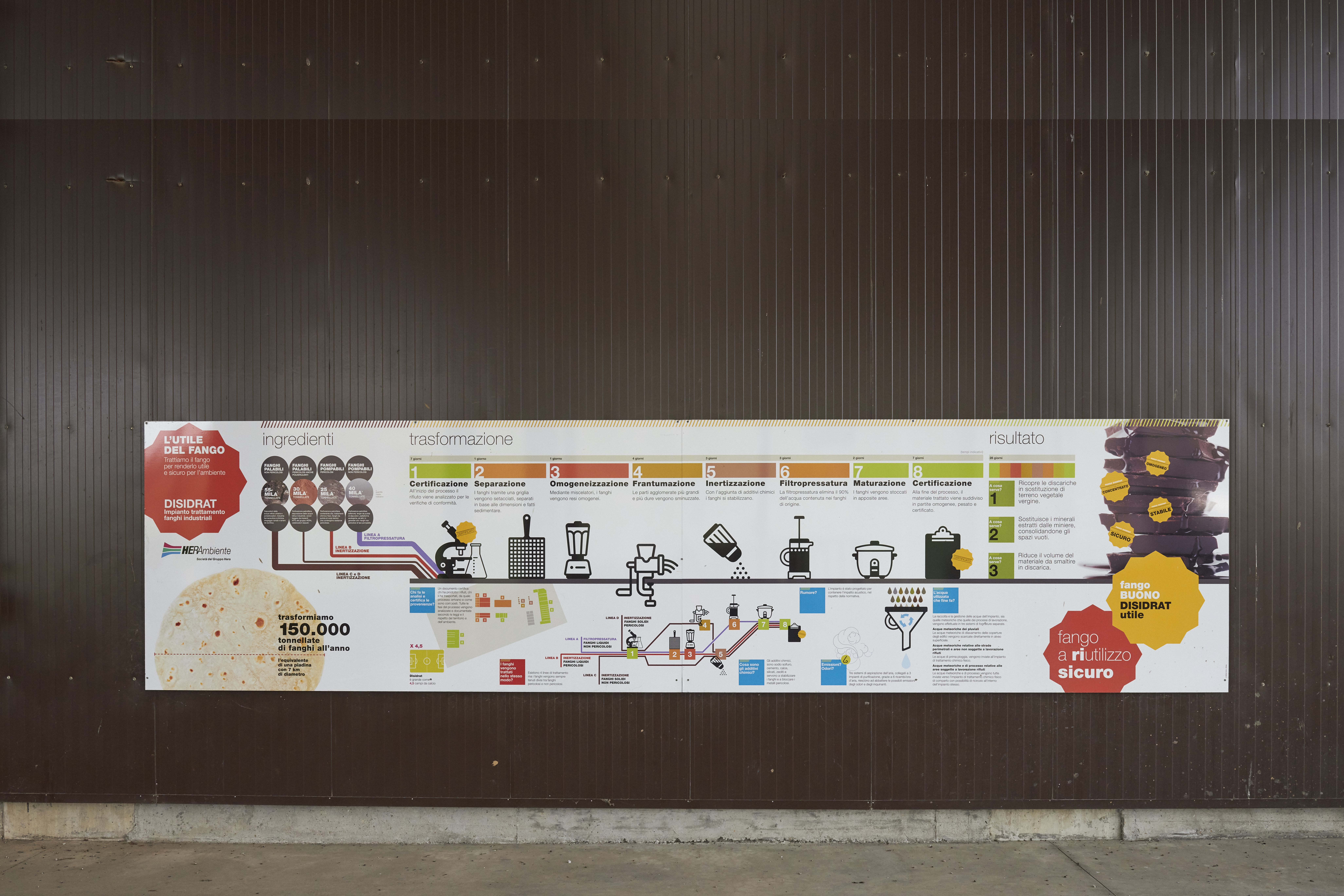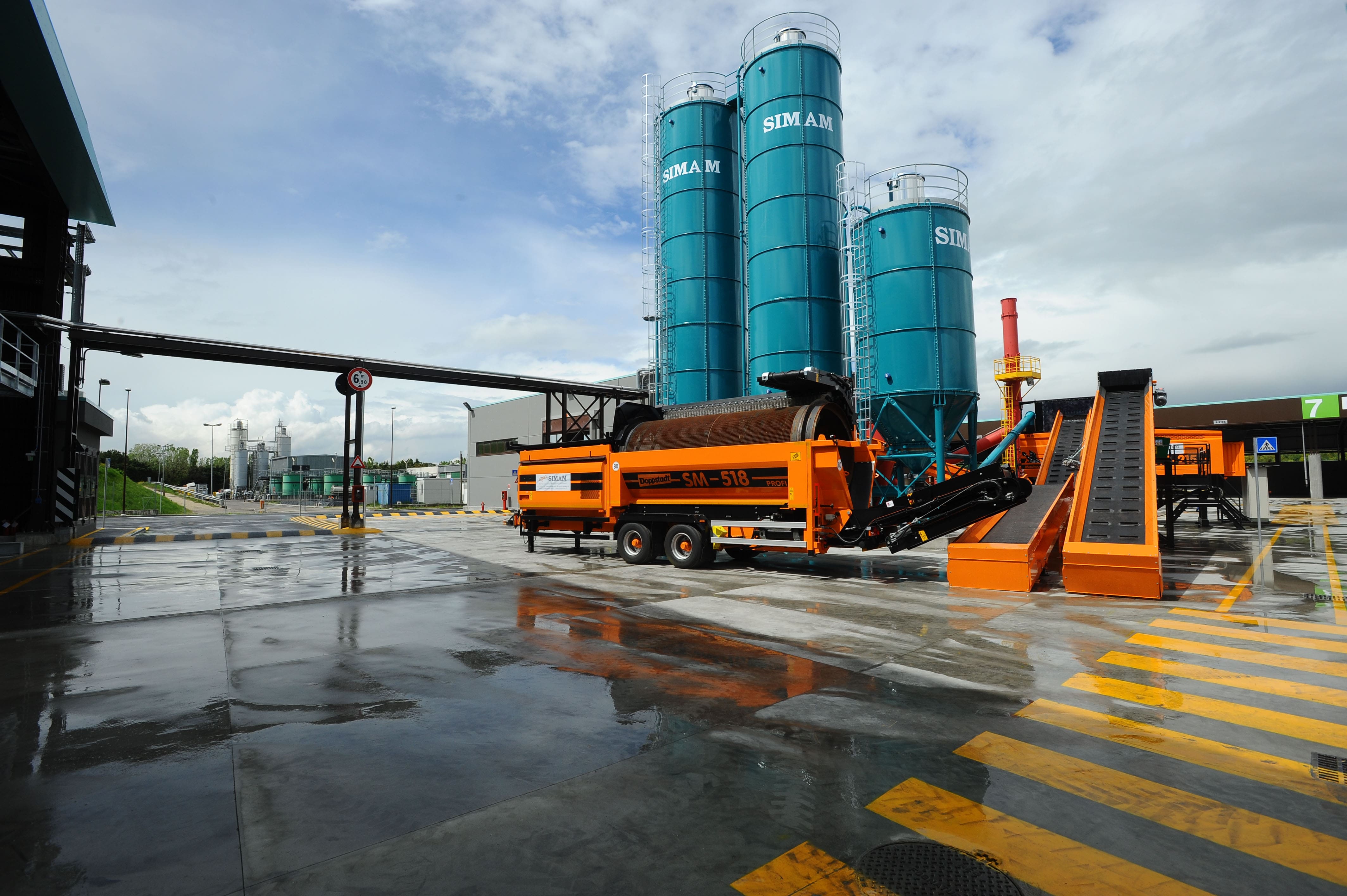Overview
The Centro Ecologico Romea is located in Ravenna along the S.S. 309 Romea Highway at km 2.6. The site is part of the Herambiente section that deals with the treatment and disposal of industrial waste, and includes the TCF plant (for the physicochemical treatment of hazardous and non hazardous special liquid waste) and the Disidrat plant (for the treatment of pumpable, semi solid wastewater treatment sludge, ash, soil).
The TCF plant in Ravenna is connected to the TAS industrial wastewater treatment plant at the Centro Ecologico Baiona through 2 underground pipes of about 4 km in length. This optimises the waste disposal process: the water, which has undergone physicochemical treatment in the Ravenna plant, is sent to the TAS plant at the Centro Ecologico Baiona for biological treatment.
Page update 5 December 2022
TCF PLANT
-
Treatment capacity
220.000 t/year -
Type of waste accepted
leachate and meteoric water from landfills in the Section; process water from the DISIDRAT plant and the RDF/energy recovery plant; oily emulsions delivered in tankers by third parties; water based liquid waste (leachate, process water, washing water, acid and alkaline solutions) delivered in tankers by third parties
DISIDRAT PLANT
-
Treatment capacity:
150,000 t/year -
Type of waste accepted:
non hazardous and hazardous pumpable and semi solid sludge of various origin (biological sludge, sludge from the physicochemical treatment of waste, reclaimed land, inorganic and organic debris), non hazardous and hazardous powdery waste originating mainly from waste to energy plants, spent reagents and catalysts.
Treatment of oily emulsions: In this section the oil fraction is separated from the aqueous fraction, the aqueous fraction is then sent for subsequent physicochemical treatment, while the oil fraction is sent for disposal with the possibility of subsequent recovery at third-party plants.
Physicochemical treatment
First stage TCF1: consisting of two treatment lines in parallel with a planned flow rate of 25 m3 per hour. During this stage, after homogenisation, the flows are subjected to neutralisation and precipitation of the metals in an alkaline environment.
Second stage TCF2: consisting of two treatment lines in parallel with a planned flow rate of 25 m3 per hour. Clariflocculation takes place in this section with flocculating and complexing agents for heavy metals and precipitation through the addition of polyelectrolyte. The clarified water leaving the section is sent to the TAS plant of the Centro Biologico Baiona for biological treatment.
TCFA physicochemical treatment section: It consists of a physicochemical treatment line (with a planned capacity of 25 m3 per hour) with the addition of reagents such as lime, flocculating agents, polyelectrolyte, sodium hypochlorite and adsorbing material. The water leaving the TCFA may, if necessary, undergo further treatment for the abatement of heavy metals at the TCF2 described above or, alternatively, be sent to the TAS plant of the Centro Ecologico Baiona for final biological treatment.
Sludge treatment (thickening): in this section the liquid sludge leaving the previous treatment sections undergoes thickening (thickening of the solid fraction) and is sent to the adjacent DISIDRAT sludge treatment plant for filter-pressing and disposal;
Accumulation, equalisation and recirculation section (VP tank): an integral part of the TCF plant is the section that receives the wastewater of the km 2.6 and km 3.8 facilities already compliant with biological treatment. The fluids are stored and homogenised in a tank with a capacity of 600 m3 before returning to the Centro Ecologico Baiona via the connection comprising 2 underground pipes approximately 4 km in length.
Sottotitolo: Non-hazardous pumpable sludge treatment line It consists of the following sections:
Reception and storage section: pumpable sludge is stored in semi-underground tanks with an overall capacity exceeding 4,000 m3. Inside each of the two main storage tanks, at the unloading stations, there are two coarse material pre-storage/sedimentation tanks, with a capacity of about 70 m3 each. The waste goes from the pre-storage tanks to the main tank via the overflow channel. Inside the main tank, the sludge is kept moving to avoid excessive sedimentation of the solid part through a mechanical system composed of horizontal axis propeller mixers placed on the bottom of the tank (4 mixers for each tank). For both tanks, the pre-storage area has an overhead crane with a bucket in order to collect and then transfer the heaviest part of the wastewater (sediment). The material thus collected is loaded into special movable watertight boxes or on vehicles with a watertight tank in order to transport it to the inerting section for subsequent processing in the semi-solid sludge line.
Treatment section: the sludge sucked from storage is fed by single screw pumps to the conditioning section with specific reagents before undergoing mechanical dewatering by filter press. The dewatered sludge coming out of the filter press is discharged into a dedicated and physically separate area, where it is picked up by a mechanical shovel and transported to the semi-solid sludge storage area or to the semi-solid sludge processing area. The resulting wastewater is conveyed into storage tanks and then transferred to the TCF Plant for subsequent treatment and/or sent for recovery in the lime milk preparation tank which is necessary for the filter-pressing process.
Sottotitolo: Hazardous pumpable sludge treatment line It consists of the following sections:
Reception and storage section: hazardous pumpable sludge is stored in semi-underground tanks with a total capacity of approximately 1,500 m3. This section functions similarly to the one for pumpable non-hazardous sludge described above.
Treatment section: the sludge undergoes a reinforcement and inerting process. The sludge is transferred from the storage tanks for treatment via two single screw pumps, with independent lines to the semi-solid sludge processing section. The stabilisation process takes place with the measuring out of powdery solid material containing metal oxides inside a mixer.
Sottotitolo: Solid matrix treatment line It consists of the following sections:
Reception and storage section: semi-solid waste is delivered to the plant by vehicles and unloaded into special areas covered by shelters. Powdery waste is instead unloaded into silos with an overall storage capacity of 580 m3.
Treatment section: the waste undergoes a reinforcement and/or inerting process by adding reagents such as lime and/or cement in variable amounts; it is also possible to use other additives such as zeolites and silicates. The sludge is processed in two separate lines which have the same capacity and can operate in parallel. One line is mainly dedicated to hazardous waste, the other to non-hazardous waste and treats pumpable sludge, semi-solid and quasi-liquid sludge and soil in addition to powdery waste stored in silos. The semi-solid sludge/soil can be introduced directly into the reactor/mixer by means of a mechanical shovel. The reactor/mixer is fed powdery waste and hazardous pumpable sludge stored in the tanks described above. Partially stabilised waste generated by this treatment may be destined for disposal and recovery. The plant has a capacity of more than 200 tonnes per day, based on 8 hours a day of processing. Inside, the waste and any raw materials are mixed by means of a counter-rotating screw system. The second inerting line is mainly used in the treatment of non-hazardous waste: biological sludge, shovelable soil and sludge, semi-solid sludge. There is a dispensing line, complete with a pump that adds liquid reagent (complexant for heavy metals) and a related dissolving system. From both lines, both hazardous and non-hazardous sludge is unloaded into a closed building kept under vacuum where it is left to react for at least 24 hours and subsequently transferred with a wheel loader into storage bays pending shipment to the final disposal or recovery destinations.
The plant has been built with the best available technologies, both with regard to environmental protection and to the effectiveness of the treatments. For the treatment of gaseous emissions, it is equipped with wet abatement towers (scrubbers) where specific chemical reagents are added to increase the abatement efficiency of pollutants, including odorous materials. The protection of the aquifer and soil is guaranteed by waterproofing with high density polyethylene (HDPE) fabric under the entire plant area. The plant is also served by a sealed HDPE sewerage system which collects and sends all the water produced by the processing to the adjacent TCF plant for treatment.
Authorisations
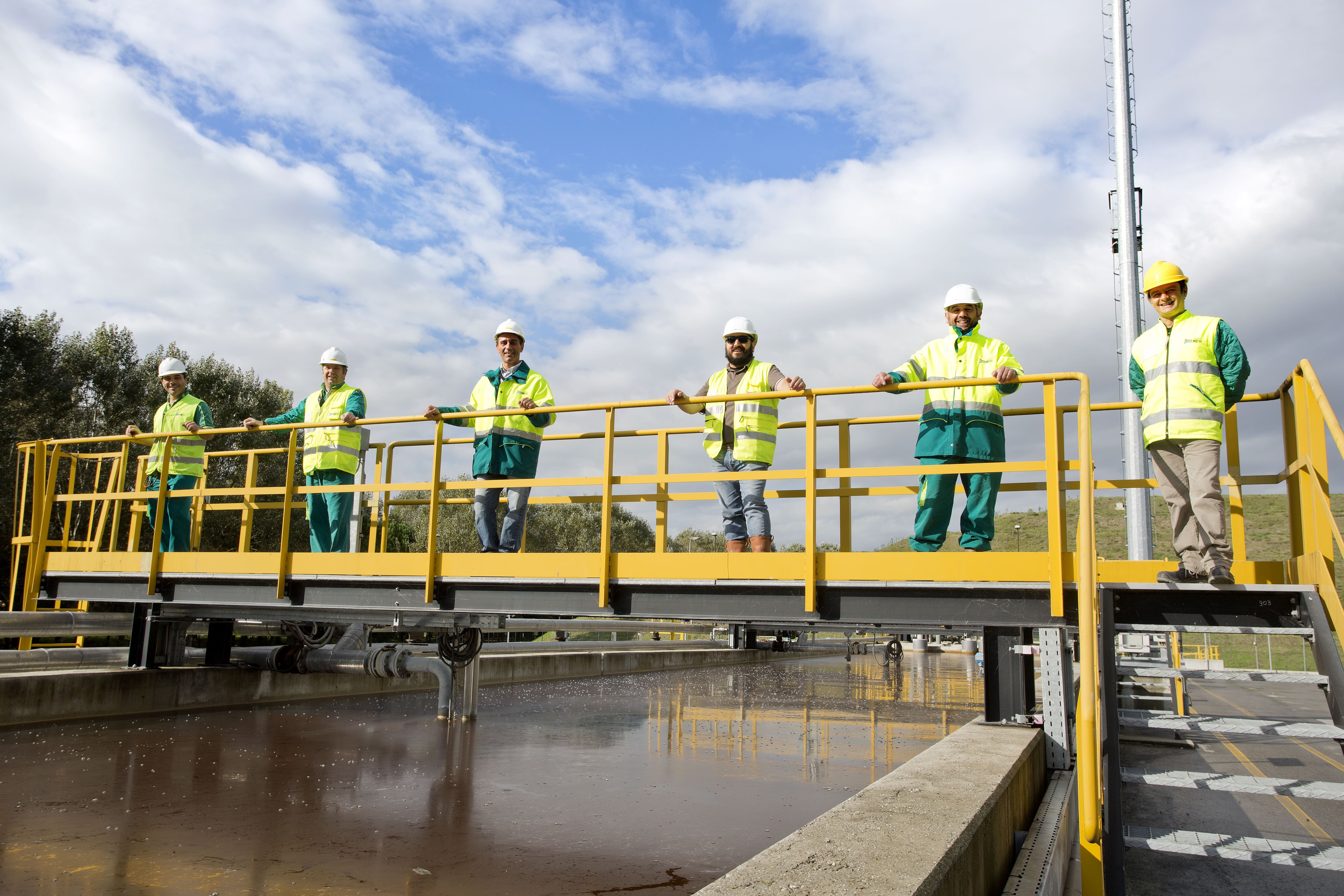
Chosen for you
You may also be interested in...

